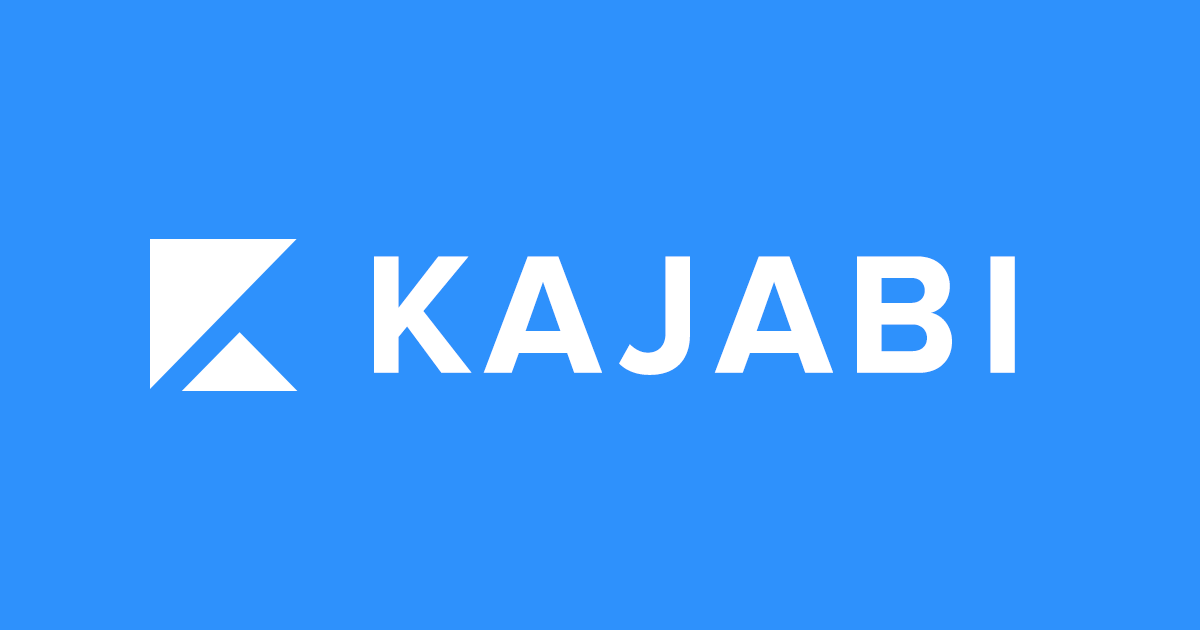Are you looking for a Kajabi review that is concise? You’ve found the right place if you are just starting to explore the world of course creation but have trouble choosing the right platform for your goals.
I have been creating and selling courses that are based on what I have learned. I’ve even made some money doing this. The process can be a struggle, but the payoff is worth it. This includes the preparation of materials that can be put out to the public, as well as other things like sales. However, it is equally important to consider the software/program.
Since I began, I’ve used a handful of platforms to promote my courses, but none of them hold up better than Kajabi. Today, I will be discussing what it is, how it works and my honest opinion after having used it for a while. Let’s begin!

For those of you who prefer a more visual experience, here is a video review from Legit Marketing Reviews’ YouTube channel. Do check out our article below, however, because it has a comprehensive overview of Kajabi.
What is Kajabi? Difference Between Kajabi And Zoom
Kajabi is an online course-building service that has been popularly known for its unique trait as a one-stop platform and the go-to place for all course business needs. Kajabi’s outstanding range of tools and features makes it easy to build and sell content for profit, no matter what your goals or strengths.
With Kajabi, you get to create courses based on your possessed skills or profession, but, since it’s an all-in-one place, there is more than it has to offer. With Kajabi’s state-of the-art automation, you can create a membership subscription, host a coaching program, or even run a podcast. You can also send newsletter e-mails directly to your customers.
Kajabi is very easy to use. For a platform as jam-packed and well-versed as it is, it’s impressive to note that its user experience manages to be as convenient and fuss-free as possible. I’ve gone to Kajabi plenty of times now, and I can say that I appreciate that I didn’t have to learn any advanced technical jargon just to use its features. Kajabi does all the coding for you. This saves you both time and effort.
Kajabi allows users to create websites that host their course content. This is something not all course builders have. There is so much potential for selling courses that Kajabi offers many marketing and sales tools to help promote them to a wider audience. These include checkouts and payments as well as detailed analytics and integrations. This is especially useful if your content is sold as products.
It doesn’t end there. Kajabi offers a wealth of support and resources that can be accessed whenever a problem arises. With a huge database of help articles and videos, on-demand training courses with Kajabi University, and a budding community of Kajabi Hero entrepreneurs, you may get to learn a lot of valuable information and even improve how you earn to the max.
From the looks of it, it’s no wonder why Kajabi has been a top pick among many content entrepreneurs. You might not believe it yet. This Trustpilot rating may convince you. Take a look at the reviews to see how many people are enjoying it. Difference Between Kajabi And Zoom
Since its founding more than a decade ago, Kajabi has helped build more than 100k businesses, oversaw the creation of 300k+ products from courses to newsletters, and has earned a whopping $4 billion in sales. While we can appreciate how well-loved this platform is when it comes to course-building, we can’t ignore some of its lapses, such as its pricey plans and lack of other crucial features such as certifications and other advanced tools.
Using Kajabi in a Nutshell: How It Works
Ever since I came across this platform, I’ve never been so glad to have Kajabi as my go-to place for promoting the skills I know and selling them to those who are thirsty for knowledge. It’s great to learn more about it.

> > Click Here to Check Out Kajabi < <
Essentially, with Kajabi, you get to do a wide variety of ways:
- You can either build your courses from the templates provided or create them from scratch.
- You can create any type of website you like to display your content. It could be your homepage/store, your course content landing page, or a space for customers to visit. Difference Between Kajabi And Zoom
- You can sell any product, whether it’s free, a bonus, or a subscription.
- Make use of its range of marketing, reporting, and sales functions to acquire a wider reach from sales funnel blueprints to affiliates.
Kajabi can be used to create products and sell them in a unique platform. Or to simply host other content and solutions on the website.
Kajabi is the reason I personally use it. It allows me to create, host and sell content I feel confident in putting out. Its impressive capabilities have made it a top platform for sharing new information with people from all walks.
Kajabi’s Pricing Plan
Kajabi currently offers three pricing options, namely:
- The Basic Plan, which costs as low as $119/month (billed annually from here onward),
- The Growth Plan starts at $159/month
- The Pro Plan, which costs $319/month.
With the Basic plan, you’re allowed to come up with three products and three sales funnels, create unlimited landing pages and marketing e-mails, gain up to 1000 active customers, and have the opportunity to create a website with hosting provided by Kajabi itself.
The Growth tier lets you explore mostly the same features as the previous one, plus upgrades such as 10,000 customers, ten admin users for one website, advanced automations, the Kajabi affiliate program, and the ability to remove all Kajabi branding from your site and courses.
Kajabi Pro continues to expand the features of the site with access the code editor. There are also level-up upgrades such as an allowance for 100 products or 100 funnels, 20,000 customers and three websites.
Unfortunately, it does not currently offer a free plan. But, despite this, Kajabi does offer a free 14-day trial for each of its available plans. If you are interested in giving it a try, this is the time to do so.
Kajabi is often criticized for its high price range. Some platforms offer premium plans at half or even a quarter of the cost of Kajabi’s Basic tier. Those who have encountered Kajabi’s premium plans may find the pricing a bit of a reach, especially for the first time. Based on my experience, however, I can empathize somewhat with Kajabi’s premium plans. It went above and beyond with its services, user experience, and pricing.
Kajabi’s Features – A Comprehensive Breakdown
Kajabi provides a one-stop shop for all your content and business needs. You can expect more from Kajabi than you might think. Without further ado, let’s take a look at the platform’s key features and break each of them down one by one, starting with its course-creation service.
Course Creation and Management
Kajabi is one of the many platforms that specialize on educational entrepreneurship. It’s not always easy to create course content. To spread content that has been hard worked to create, it takes weeks of careful brainstorming. Difference Between Kajabi And Zoom

> > Click Here to Check Out Kajabi < <
Kajabi knows the struggles creators face. That’s why it went the extra mile to make sure everything runs smoothly, while also addressing the common issues most people can relate to. With that in mind, Kajabi offers its users a go-to space where they can create impactful courses and, at the same time, are provided with all the necessary tools to further their reach – from how to attract potential subscribers with convincing teasers to sharing what they know using unique approaches to make them stay longer.
Courses and Products
In Kajabi’s terms, products refer to any type of digital course you’re bound to make. It can also refer to other forms that may, or may not, contain the usual course content. Some similar platforms simply refer to these products as courses due to their educational nature. Kajabi, on the other, knows how important the term implies – It’s not just the varying amount of knowledge put into a feasible outcome that matters, but also how well it sells to audiences everywhere.
Kajabi currently offers seven types of products. Each product can be used as a template or blueprint that you can immediately generate and modify. An Online Course is one of these. You can create as many lessons, media files and information as you like. Another is a Blank Blueprint, where you can start from scratch and add anything you want.
Kajabi also offers other product blueprints, including the blank template and main course.
- Mini-courses – for whenever you want to produce a quick, easy-to-digest course as a freebie or bonus, something to build extra value for your brand and anticipation for what’s to come
- Evergreen Training – also known as Drip Courses, gives you a strategic framework that sees course lessons released periodically, preferably over a series of weeks
- Coaching Program – designed by Wall Street bestselling author Brendan Burchard, lets you create an intimate 12-week program as a means to enhance your skills to the next level
- Membership – for when you want to store all your content in one central platform where your subscribers can explore anytime
- For when you want to make a community where your members can share their thoughts and ideas about your courses, and other matters.
The Course Building Process
After selecting your preferred product blueprint, it’s now time to build your course by adding whatever needs to be added. You can either start from scratch or adapt an existing template. The best thing is to incorporate all of the knowledge and skills that you have acquired over the years into an information-rich course.
Kajabi’s page for course builders will allow you to explore many customization and editing options. You can add the title and sections of the course to Kajabi’s course builder page, upload a poster or thumbnail that matches your goals, and adjust the flow of your outline.
Additionally, you may upload downloadable PDFs, attach media files, utilize bulk uploads powered by cloud storage software, and add e-mail automations, among other things. You can also use Kajabi’s course creator to create clones and add announcements within your course to keep students interested.
The Course Framework
In Kajabi, the sections that comprise the course are referred to as categories, while the lessons placed under those categories are named posts. A product’s category may contain a placeholder for subtopics that are related to the main topic. The same can be said for posts, the subtopics of the primary one are replaced with lessons under each subtopic.
Apart from the categories and posts, Kajabi also allows you to add subcategories under the former – this is quite helpful, especially if you have a huge curriculum in mind and you want to dissect it into digestible parts for your students to understand better.

> > Click Here to Check Out Kajabi < <
Kajabi allows you to choose whether the product’s contents are released periodically or simultaneously. In its Drip Courses, especially, you may choose the Drip option to set the release duration of the categories within a few days or even a week from each other. You may also opt for the Lock feature to block students’ access to any category unless they finish a prerequisite.
Exploring Kajabi’s Course Player
Every course needs a place that allows them to be seen, clicked, and taken further. It should also be attractive. Kajabi’s Course Player feature provides a platform that allows you to store and display your products to students who have subscribed. You can customize the courses and the course player to create a better learning experience.
Kajabi has over 10 default course player themes to choose from. You may find that most platforms only offer three themes, or one in-store. Compare that with Kajabi’s wider range, all you’ll notice the difference right away. What I particularly like about it is that there are more options to explore – Kajabi surely may be quite too pricey to afford for some, but we can at least appreciate how much it gives to offer us this privilege! Difference Between Kajabi And Zoom
You can choose from any of the course theme themes and customize it as you wish. Kajabi values convenience above all else, so you don’t have to know how to code to make your course player look great. Or, if you’re better equipped with web design skills, you may opt to upload your fully-personalized theme instead!
Interactions between Instructors and Students. Assessments
Communication is crucial to student success and an opportunity to earn the trust of the instructor. Kajabi offers many ways for members and you to interact. One of them is the Community feature, which you may choose to offer as a standalone product or part of the membership package. It functions like a social media page where you and your subscribers write, see who’s online, share posts, and make comments relating to the lessons you’ve put out. Another comes in the form of comments under every lesson – you may choose to manage, hide, or even disable them altogether.
Assessments are a great way to keep your members interested. This involves creating quizzes that reflect the lessons they’ve learned to stimulate their brains. There are different types of questions that you may use to create an assessment, from multiple-choice questions to paragraph fill-ins. You may even set a passing score to encourage your students to do better… or don’t at all if you’re not into giving them more pressure.
As great as Kajabi’s assessment feature may seem, it’s a bit apparent that it may fall short a bit when it comes to delivery. Kajabi appears to be the only course-building service that doesn’t offer native certification tools, which is a significant difference from other services. It’s not something I mind, but it may be a problem for those who enjoy giving out certificates. This one asset would have been a great way to reward students for their accomplishments, such as finishing the course.
Website Building Tools
Kajabi’s ability to provide powerful, yet easy tools for creating websites is another important aspect. Kajabi’s built-in website builder allows you to create and customize your website without having to rely on third-party providers. The platform offers free hosting for all plans.
Although the Kajabi website builder can be very easy to use, there are times when it can be confusing. Drag-and-drop is available for the editor. However, it is not what you would expect. Instead of “drag/drop the blocks/widgets out of the menu and place them in the workspace”, you can drag sections of a page from top to bottom from the left-hand navigation menu. The workspace will then reflect the changes.
Website Design and Customization
Kajabi’s website creator allows you to choose from 14 themes (eight regular themes and six heritage themes) along with a complete set of pages. After you have chosen the right theme for your website, it is possible to customize it according to your flow and vision. Difference Between Kajabi And Zoom
You may do so by adding or deleting each page’s building blocks, which comprise many types of content such as text and font styles, media widgets, pricing, offers, FAQs, and testimonials. You may even incorporate countdown widgets, fill-in forms, social media content, and even call-to-action buttons to catch the audience’s attention.
Kajabi has many other ways to customize your website. One is by tweaking the overall look to fit your or your business’s aesthetic through the theme settings tab. You can change the default typography, icons and color scheme of the site, as well as the background or profile color.
Another option is to upload a custom theme that’s not in Kajabi’s collection, much like with Course Player. Kajabi allows you to connect your custom domain to the site you have just created. The platform may already have a default domain prepared for you, but if you’re looking forward to maximizing your business without the Kajabi branding, you can by connecting to a domain purchased from a third-party platform like GoDaddy.
The Types of Pages for Your Website
A common Kajabi theme is made up of pages that are linked to each other as soon as you click them. These include the standard home page which normally contains the gist of what your business or service offers, a library to house all the content you’ve uploaded on Kajabi, a functioning store where users can purchase your products on the spot, and, especially, landing and sales pages to help convince new customers to try out your content for themselves.

> > Click Here to Check Out Kajabi < <
You have the ability to add or delete any page from any Kajabi-optimized template. There are more page options for you to explore other than home and landing pages, such as a log-in page, thank-you page, 404 error screen, portfolio, FAQ, policies, opt-in pages, and a coming soon page. If you happen to have blogging as part of your specialties or skills, there is a separate blogging page that lets you compile your published posts into an archive that readers can look into at any time.
Blogging Capabilities
Kajabi’s built-in blogging function allows you to publish posts to your blog and make them visible to everyone. We all know that blogs can be used to post articles related to a variety of topics, even those that may be adjacent to one’s current skill set, right? Well, Kajabi’s version has much of the same purpose.
If you wish to give updates on the products or content you plan to release in the future, share a handful of tips based on what you’ve learned so far in your chosen path as a means to inspire others, or offer search engine-optimized articles to boost your traffic in any way, you may fancy yourself with Kajabi’s blogging tools. Difference Between Kajabi And Zoom
It functions similarly to that of well-recognized blogging platforms such as WordPress – you type in the words you want to say, the media files and links you want to share, and the tags for which you think your post is more appropriate. Once everything’s ready, you may have the option to either publish it immediately, post it as unlisted, or set a schedule to save time. Although Kajabi’s blogging tool may not be as dynamic as WordPress’s, it is functional enough to be used by anyone.
Marketing, sales, and CRM
In course management, how you market and sell your products can either make or break your brand standing. An effective marketing strategy has a better chance for your creations to gain clout and revenue. A poorly organized strategy can lead to low to no turnouts. The process of planning how to make products as sellable as possible can be such a daunting task, and Kajabi remedies this by providing an impressive suite of marketing and sales tools designed to maximize your platform and ease your convenience. Plus, it surprisingly outdoes its other top contemporaries in this field, in my opinion!
Convenient Sales Pipelines
A well-designed funnel can lead to greater opportunities for your company. However, designing one can be difficult, especially if it’s not something you are very familiar with. Kajabi’s pre-made, well-designed pipelines are ready to use and customizable. There are 14 templates in total, seven of which are default and seven for legacy templates.
Each one is tailored to your product promotion needs. You may give away freebies to your potential subscribers to keep them interested, show your courses in a way they can be tempted to purchase, coach them, or hold a Zoom meeting. Sales pipeline blueprints are a big help in generating leads and increasing traffic leading to my content, and I honestly have never been glad to be able to use them.
As with some popular course platforms that have this feature, Kajabi’s collection sales pipelines are convenient and straightforward, plus it requires zero expert skills to get things right as the blueprint is automatically laid out for you. Kajabi’s sales funnel includes cards that contain pages, automations and sequences that will be welcomed by your customers.
E-mail Marketing and Automations
Sending e-mails is a fail-proof marketing strategy that businesses of all types use, whether it be to promote new releases from musical artists or to share updates on new and on-sale items from your favorite retailers. This is also true for courses and other learning material – Kajabi’s integrated e-mail marketing function helps to keep your customers and members highly engaged with what you have released.
There are two types of e-mail campaigns you might want to explore: e-mail broadcasts for whenever you want to send a single e-mail related to your courses to your subscribers (like a newsletter), and sequences where you create messages to be sent based on the user’s activity via automations. It may seem familiar to some, but it can be a time-saver for those who don’t know much about e-mail automations. Difference Between Kajabi And Zoom
Automations are generally designed to reduce the workload. In this instance, you won’t need to send e-mails manually as you can set them to correspond to student actions. With Kajabi’s e-mail sequencing feature, all you’d need to do is create messages, choose when to have them sent, tag any of your subscribers who meet a certain condition and into different categories, and you’re all set.
Campaigns and automations aside, did you know that you can also create e-mails within Kajabi? The platform has a variety of templates that you can choose and use, and its e-mail editor allows you to edit how you want it to look the same way you’d do with website pages – tweak the hierarchy of your building blocks from top to bottom, add sections, and, if you have an eye for design, switch up the color palette and upload images to further set the mood.

> > Click Here to Check Out Kajabi < <
CRM for Managing Members
Managing individuals who are subscribed to your courses can be a pain, and even more so if the provided platform for it is unstable. Thankfully, most course management services have functional CRM (customer relationship management) tools that they can rely on to keep your students on track, Kajabi included.
Kajabi’s CRM section, also known by its term People if you sign in, allows you to check on the activities of your members from afar. You may get to see who purchased any of your products or subscribed to your membership, track the progress if they’re doing well or not, see who’s been inactive for longer, and even go through a list of e-mail contacts that have been hard bounced for reasons such as an invalid domain.
Check out the profile of one of your students to learn more about them. Here you can see the student’s life, how long they have been enrolled in your course, and detailed information such as when and where they signed up. Kajabi’s People feature can be useful in checking who has performed poorly and giving them a boost with feedback notes and, if necessary, a few freebies to get them back on track.
Kajabi’s CRM features go beyond the People dashboard. Course assessments and affiliate management are included in the bundle. We’ve already talked about the former earlier in full detail, but we haven’t come across the latter yet, which is what we’re exactly about to do shortly.
Kajabi Affiliate Program
As a way of expanding its reach, a successful business can recruit affiliates. The Kajabi Affiliate Program is only available to Pro and Growth plan users. It provides them with a few resources to help transform their members into trusted affiliates for your brand. Essentially, all it takes is for you to convince your most proactive students to join the program, and they may get a share of your earnings as a benefit!
Kajabi Affiliates will help you build a bigger following. You could also have more chances of generating extra clicks and elevating the conversion rate of your content. If you’re already established in the industry you’re working in, you might find this one practical as you can manage and track your affiliates and how they’re doing to boost your leads and profit from the comforts of a specialized separate dashboard. Difference Between Kajabi And Zoom
You can send them links to share, track how many clicks they have, track potential sales and even kick one out if they aren’t satisfied. To encourage members to sign up and share announcements, you can create an affiliate onboarding page. This will allow you to generate links to any website, not just Kajabi.
Sales, Payments and Accurate Analytics
Many course management companies take a small percentage, too much, or even half of the profits you make from selling courses. Kajabi, meanwhile, makes sure that the money you earn goes straight into your pocket. Kajabi is my favorite platform because I can keep 100% of the revenue I make from selling my products. This gave me a tremendous morale boost, which I don’t get from other platforms.
While I can understand why they needed to make cuts to maintain their business model, it is a problem for edupreneurs who want to grow and are keen to improve. Fortunately, Kajabi has a solution to further let them grow, even despite the high price range. Apart from the benefit of keeping all your earnings to yourself, you can also manage how you handle refunds. Kajabi doesn’t have to be strict about this, and allows its users to make their own decisions. They can let their members access their content even after they request a refund.
Kajabi offers native integrations with the payment gateway outlets Stripe and PayPal. Because PayPal is a common method of online payment, Stripe handles credit and debit cards. Take note, though, that you may need to pay service fees to whichever payment gateway you plan to use – technically, you’d have your revenue deducted in some capacity, but not in a major way.
Do you want to get in-depth insight to improve your business? Kajabi’s analytics and reporting features may be just two of the numerous ways to achieve this. The analytics has ratings, charts, and graphs that clearly show how your courses are doing so far, with accuracy close to a T. Meanwhile, you can explore a list of reporting options to choose from and view, from net revenue and sales performance to website views and subscription metrics. All the data from these features can be printed and exported to other platforms. Difference Between Kajabi And Zoom
Customer Service and Support
Kajabi is more than a great array of features. It equally shines when it comes to customer support, which has amassed an overwhelmingly positive reception among many who have used the platform to make business.
For example, the hotlines for customer service are a reliable way for customers to get assistance immediately or for any questions. Kajabi’s vast library of learning materials can be used to help you if you are too shy to ask. We have a lot of useful stuff to look through. Let’s go over each one.
On-demand Customer Service Teams
Kajabi’s customer support team is split into ticket support and chat support. First off, its chat support feature, backed by skilled course creation and marketing experts, can be frequented by users regardless of which type of plan they are subscribed to – the only difference lies in the time of availability. The chat feature is only available to Basic subscribers. Growth and Pro users, meanwhile, get to utilize it 24 hours a day, seven days a week. No matter what type of plan you use, rest assured that, if you have any inquiries about the service, you are guaranteed to receive a concise answer in as fast as 15 minutes. Difference Between Kajabi And Zoom
You may also opt to submit a request ticket if you’re not up to chatting and don’t want to be distracted anyhow. Simply put in the inquiry you have in mind, the category that you think it’s more appropriate, your e-mail address, and attachments, among other things, and submit all of them to Kajabi. Expect to receive an e-mail from the customer support team in your inbox within the next few hours.
Kajabi Help Centre
Kajabi’s Help Center offers unlimited access and allows you to reach out to other people online in real-time. Difference Between Kajabi And Zoom
It’s divided into many topics to assist you in getting started. It is filled with videos, photos, and articles that are rich with valuable and informative information. These include information on setting up your website, creating a sales funnel, and navigating through your account dashboard.

> > Click Here to Check Out Kajabi < <
Kajabi Access
Kajabi Access is one of Kajabi’s most recent offerings. It gives entrepreneurs support and guidance to help them succeed in their industry. You can add it to any existing plan at $99 per month. Although the price is higher than those of the other tiers, we know enough about Kajabi to say that it’s worth it. Difference Between Kajabi And Zoom
With Kajabi Access, you’ll be able to hold one-on-one calls with Kajabi’s experts, though you’ll get to only do it six times a year. Not only that but you’ll also be gifted with double the allowance for products and funnels, the weekly Hero Hub sessions, and early access to Kajabi’s latest products and features.
Kajabi University
Similar to Kajabi Access, Kajabi University is a jam-packed learning source geared toward guiding fresh entrepreneurs with tips and tricks on how to run a successful business. The former is achieved mainly by intimate meetings with bona fide professionals and notable upgrades. The latter achieves this by allowing you to browse through a rich library informative courses that can be enrolled in at any time. Difference Between Kajabi And Zoom
Kajabi University’s content is broken down into specific boot camps, how-to guides sets, difficulty levels, as well as niche topics. These courses last anywhere from six to four hours and can be as short as six minutes long. Each course covers a variety of topics necessary for Kajabi, from a beginner’s guide to creating your first video lesson to a slew of marketing methods hosted by real-life professionals.
Webinars, meet-ups and a Community of Heroes
One of my favorite things I’ve learned about Kajabi since I came across it for the first time is that it champions the community of the people who have helped build the platform from the ground up, even more than some of the other course-building services out there. It does this in a similar way to how it promotes user convenience and accommodates users to maximize their standing. Difference Between Kajabi And Zoom
Kajabi offers entrepreneurs from all walks of life a variety of outlets where they can interact with one another – and inspire each other to be at their very best. These include live and on demand webinars that feature talks and discussions from experts and distinguished guests, virtual meetups where Kajabi creators can share advice and connect, as well as exclusive access to Kajabi Heroes’ private Facebook group. Difference Between Kajabi And Zoom
Speaking of Kajabi Heroes, it’s worth noting that, apart from the online interactions, Kajabi takes it seriously when it comes to giving its user base the best it has to offer – not just figuratively, but literally. Kajabi fondly dubs each customer who has channeled their efforts into success using the platform a “Hero.” Its Hero Rewards program sees any Hero receive gifts and freebies delivered straight to their door once they reach certain milestones. These include a stationery set, clothing merch, accessories such as bags, reusable cups and mugs, and even honorary badges!
Kajabi’s Pros and Cons
By now, you may already be impressed by the sheer amount of offerings the Kajabi platform provides. It has its flaws, but they don’t overshadow its strengths. Let’s take a look at all Kajabi’s benefits and drawbacks!
The Pros:
- It offers a well-organized and sleek user interface that is easy to use. This makes it a highly functional and robust experience for all who use it.
- It’s easy, flexible, and nearly entirely intuitive to use, from website building and course creation to payment processing
- It offers free website hosting on top of letting you create a fully-functioning one, something a couple of course management platforms cannot provide
- It contains a variety of great in-house tools, from marketing to user management. This minimizes the need for third-party integration.
- Its customization capabilities are not just simple but also robust
- It takes zero percent of your profits, and you’d only need to pay service fees to either Stripe or PayPal
- It offers a social media-like feed that allows you and your family members to interact and communicate with each other
- It shines in its reliable customer support system and information-rich learning resource library
- It manages to prioritize championing its userbase community on top of all its features

> > Click Here to Check Out Kajabi < <
The Cons
- It has a higher price range compared to other course-building platforms – this is because it follows a different framework and business model that doesn’t resort to burdening the user
- It does not have a native tool for recognizing students. It also lacks assessment features, such as the inability of setting the length of each question or uploading question files.
- It lacks advanced features like custom tracking for affiliates and inventory tracking, but it does have a management feature.
- Although the interface is flexible and intuitive, there are some functions that can be difficult to use.
Alternatives to Kajabi
When I first stepped into the world of educational entrepreneurship, it took me a very thorough research period, plus skillful thinking strategies, to find the course management platform that would fit more compatibly with my skillset and needs. My marketing and course-building skills have grown beyond what I had when I was a beginner. It was therefore appropriate for me to switch to other services to meet my growing demand. Difference Between Kajabi And Zoom
Now that I have gained near-expert-level skills, necessities, and budget to keep me going as an edupreneur, I’ve found a place I can call my home in Kajabi. I’ve had a couple of already established colleagues as well who’ve used it to share their knowledge with the world. While Kajabi may seem to provide as many tools as possible to help elevate your opportunities, it shouldn’t be the only platform you must consider – some of its functions may not suit your current skillset or budget best, and I wouldn’t want you to have a hard time with it. Difference Between Kajabi And Zoom
Thankfully, backed with years of experience down the line, I can confidently share with you some very useful alternatives to the Kajabi service. These three platforms allow you to create and sell your content. You might find the right service for you among these three. Additionally, I encourage you to do more background research into any of them to help solidify your final decision.
#1: Thinkific
Thinkific joins Kajabi among the leading online course management platforms making waves to this day. Known by many for its clever selection of industry-level tools needed to craft a course and cultivate a community, Thinkific has the upper hand when it comes to its beginner-friendly accessibility, making it easier for anyone to try.
It also has partly an advantage in its set of plans – Thinkific’s equivalent to the Kajabi Basic tier lets you create unlimited courses and students for only $74 per month, and its free plan is a great way for absolute newbies to start their journey in edupreneurship. Although Thinkific and Kajabi offer nearly identical features and can be used by both experts and beginners, there are certain aspects that may make one more appealing than the other.
#2: Teachable
Another popular service with sizable clout and reputation, Teachable shines best when it comes to the process of making enriching course content. It contains a slew of competitive and comprehensive course management features, including native certification, drag-and-drop editing, and additional course options including one-on-one coaching sessions.
Its payment gateway support is also diversified, allowing users to include Google Pay and Apple Pay options apart from credit/debit, e-wallet, and PayPal. Although Teachable’s dynamic course-building has made it to where it is today it still lacks in many other areas, such as its community-building capabilities. Teachable may be the right match for you if you aren’t bothered by any of these or prefer to concentrate more on course-building.
#3: Podia
Podia is one of a few underrated course-building sites that remains undefeated in terms of user experience and a flexible range of tools. Advertised as a creator-friendly platform, most individuals who’ve used Podia to make and sell digital products have found it extremely easy to navigate through its interface.
They’ve also generally admired its ability to fit as many features as it can in very budget-friendly pricing plans, with the most premium plan available at as low as $166/month – only a few dollars much cheaper than Kajabi’s $119/mo starter tier. Podia might be a better option if you are looking to grow your edupreneur following but have limited budget.
Kajabi: The Bottom Line
Kajabi is the one-stop-shop for course content management. Kajabi excels in almost all (if not all) of what you would expect: course-making (to a certain degree), sales, promoting, websites, customer support, heck even customer service!

> > Click Here to Check Out Kajabi < <
While Kajabi’s offerings and platform help create an opportunity for dynamic usage, we can’t fully gloss over its limits. I’ve had some issues with its lack of other core and advanced tools, plus extra marketing and product management options.
The confusion with the editing layout doesn’t help either. The interface was not what I expected when I first explored the website editor. Maybe it was either my eagerness to use the editor to the point where I had to skip through some instructions altogether or my recurring habit of dragging and dropping in any editor before this.
There is some learning curve, but it’s worth it! To sum everything up, Kajabi is a great platform to not just build your career from the ground up but also develop and expand into a thriving one. If you’re either already established or have enough resources to begin your edupreneur career, head on over now to Kajabi.com!
FAQ Difference Between Kajabi And Zoom
Are Kajabi-made sites reliable and safe to use?
I may not be that well-versed in terms of building websites, but I can attest that Kajabi-made websites are impressively good so far. Your website will not only receive hosting free of charge, but also the platform will provide it. You will get an SSL safety certificate and Wistia video hosting. It also comes with a user-friendly interface. There are no problems as well when it comes to stability and loading, so I can assure you that you’ll be in good hands!
Does Kajabi support third-party integrations?
Kajabi doesn’t require you to integrate with third party platforms. All course-building tools and marketing tools can be found in one location. If you want to maximize your use, however, Kajabi currently has ten native integrations to third-party apps. This includes Zapier. You can also connect to other platforms manually using the API tool, provided you are proficient in coding.
Does Kajabi offer a mobile app?
Yes, it does! Kajabi offers a mobile app that is available in the Apple App Store as well as Google Play for Android. This app allows subscribers and members to view and read text messages, view photos, videos, answer quizzes, and communicate with each other from any location. Take note that, while you and your students can access your course materials on the go, you will most likely have limited access in terms of management.
